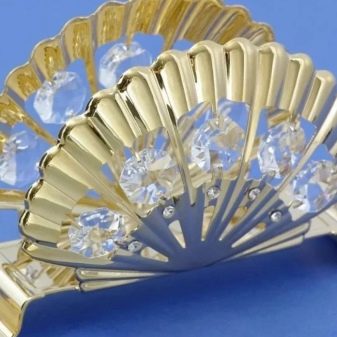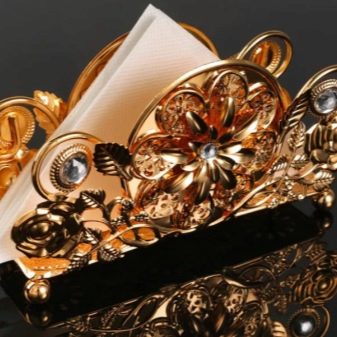What are napkin holders and how to choose them?
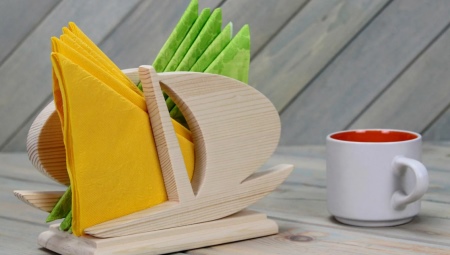
Napkin holders are an integral part of table setting. Therefore, they should not only perform their functions, but also look harmonious against the background of other objects. Let's consider in this article what napkin holders are and how to choose them.
Description and purpose
Paper napkins are a must. The devices for them - napkin holders - have a wide variety of shapes and are made of various materials: from paper "vine" to porcelain and crystal. Simple plastic products are used in catering points; in the banquet halls of prestigious restaurants you can see products made of stainless steel, cupronickel, ceramic, and porcelain. In high-income homes, napkin holders may be part of a silverware set. Crystal products, playing with a light rainbow in the rays of lamps, look amazing. Models can be open or closed.
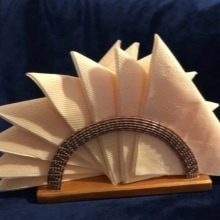

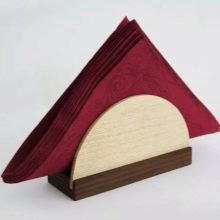
Any napkin holder can transform a table. Even if it is a standard plastic product, the table still looks more attractive. Without such coasters, napkins would have to be folded in a pile, which would certainly begin to crumble, creep apart, giving the tabletop an untidy look. This type of attribute can be found commercially from a variety of materials, ranging from budget products made from inexpensive plastics to crystal. Handicraft lovers make them by hand, sometimes creating original products. Wicker models made from newspaper tubes, wooden ones, assembled from special blanks are very popular.
These kits for needlework can be purchased at specialized retail outlets.
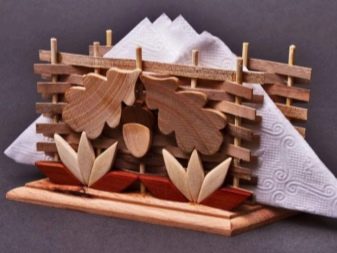
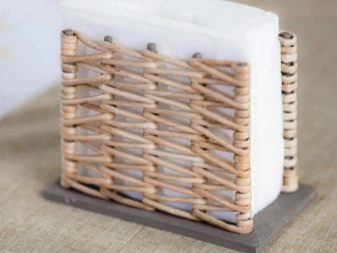
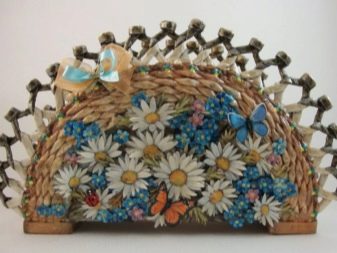
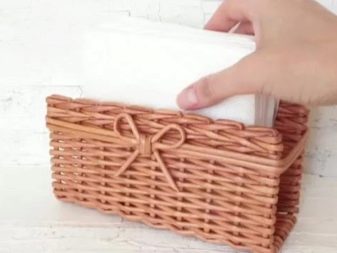
A napkin holder is used on tables during meals, in the kitchen, where napkins may be needed while cooking and storing food. Closed boxes for storing napkins are needed in the bathroom. Small elastic boxes are stored in a bag to always have at hand. An attribute of this type plays the role of a dispenser - it allows you to easily take out one napkin, while the rest remain in the container, protected from dust and dirt. This is if we talk about the practical side of the matter, but the device has another property.
An exquisitely made napkin holder is a real decoration of the table. Serving without this part is impossible, unless you use textile napkins.
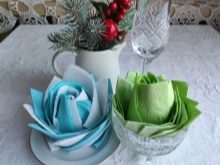

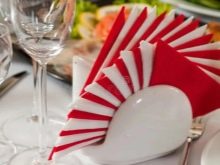
History of origin
According to historical sources, the first napkins on dining tables appeared in ancient times, in the form of fig tree leaves, in Greece. There is nothing to be surprised at, because the Greeks have always been aesthetes. Ancient Rome replaced the foliage with the edge of the tablecloth, cleansing the hands of food debris in a more advanced way.
Paper napkins appeared after the First World War. As a basis for their manufacture, cellulose wool was used, from which bandages were previously made. There was a lot of such cotton, and this raw material served as the basis for napkins. These options have replaced fabric specimens. At the same time, the need arose to create a napkin holder. Since then, these devices can be found on the tables.
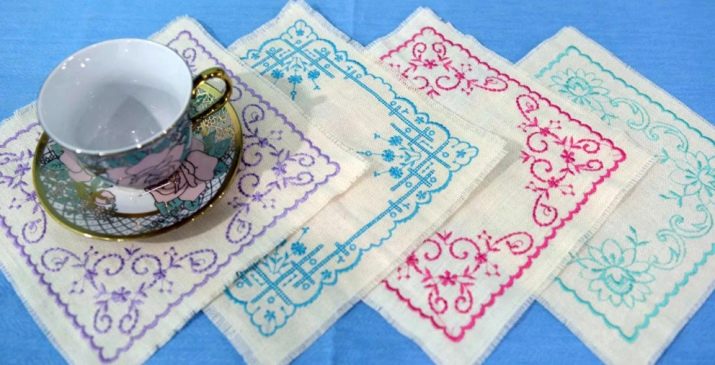
Varieties
Napkin holders can have not only a direct function - to keep paper products in a compact state, but also have additional capabilities. This is the case with automatic paper towel dispensers. The napkins enclosed in the box can only be removed one at a time. Such options have become a must-have accessory in catering outlets. You can purchase a napkin holder with a clamp, a combined product with compartments for spices. Simpler ones, whose purpose is to hold a ream of paper, in contrast to dispensers, give room for the imagination of designers.
The variety of shapes and decorations is complemented by a rich selection of materials for production. Products made at the beginning of the last century have become valuable exhibits. This option can be found in antique shops, souvenir shops, etc.

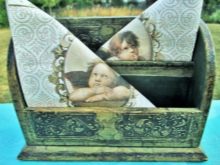
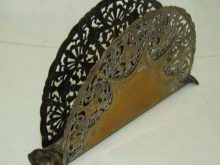
Metallic
Products of this kind made of metal are very beautiful - the polished surface reflects the rays of the lamps. Such products can have strict shapes, clear lines or trim in the form of lace, represent various figures.
Types of metal from which products of this type are made:
- tin;
- brass;
- bronze;
- silver;
- cupronickel;
- aluminum;
- nickel silver;
- stainless steel.
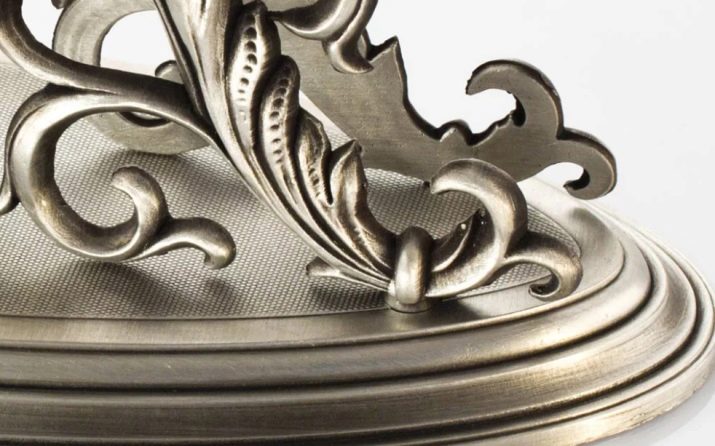

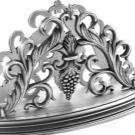

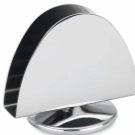
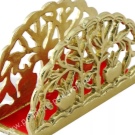
Some of the metals (cupronickel, nickel silver) are used only in tandem with a coating, for example, with silvering, gilding. Tin, bronze — it is rather a piece goods. For mass consumption, such devices are not produced; in this case, stainless alloys are used. They are perfectly protected from corrosion, reliable, safe, and have an attractive appearance. The metal product fits easily into any interior. Even in the Russian room, a stainless steel napkin holder will look great next to an electric samovar or its analogue. A universal accessory can be used as a gift, souvenir.
More expensive models - forged, silver, inlaid and gilded - can be passed on to descendants, becoming part of the family heritage and history. Such items are sometimes performed in an ensemble with containers for spices, fruit bowls, candlesticks.
Massive stainless steel models are made in a laconic minimalist style, have strict geometry and are characterized by the absence of decorative elements.
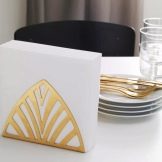
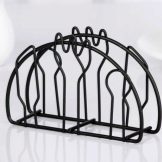
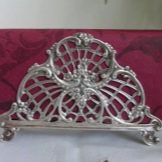
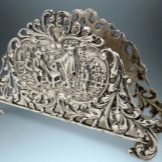
Ceramic
Ceramic products are already a more exclusive option with a special aura, warmth, and coziness.Ceramics perfectly complements the elements of Provence, eco-style, Russian style, etc. Ceramic material has an unusually huge potential, an elegant piece can be glazed and painted in Gzhel, glazed ceramics - a more homely look. Unpainted clay (terracotta) loves an extruded, embossed pattern, this is an original model, this one can rarely be found on the counter of the store. It's easier to order a unique version from potters.
The Provence style napkin holder is necessarily decorated with floral ornaments and drawings of birds.
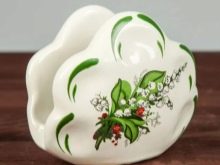
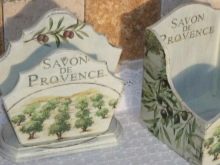

Plastic
The plastic option is the cheapest attribute. For a festive serving, it is not always suitable, but in everyday life it is irreplaceable. Made from acrylic, PVC, and meticulously environmentally friendly, these models come in a wide variety of shapes. An openwork stand or made in the form of a funny figurine, strict parallel circles, rectangles, triangles, fan-shaped - the variety of forms is simply endless.
Choosing this or that plastic option, you can decorate the table, give it a festive or austere look, such a product is suitable not only for a dining table, but also turns out to be appropriate on a student's desk, because hands stained with ink or paints are far from uncommon.
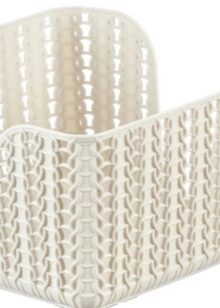


Wooden
Wooden coasters for paper napkins are most suitable for decorating a kitchen or cafe in the style of a rustic room, in eco-style. The wooden product has a special expressiveness, conveys the warmth of a living tree, creates a special comfort in the surrounding space. Natural materials are a modern trend, fashionable, stylish, beautiful, rich in possibilities for the most diverse design.
Wood models can have different painting:
- Khokhloma;
- palekh;
- mezen;
- polkhovskaya;
- Zhostovskaya;
- Gorodetskaya;
- petrikovskaya;
- Severodvinskaya.
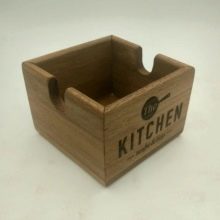
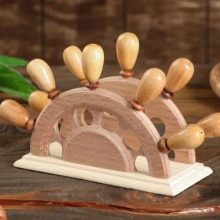
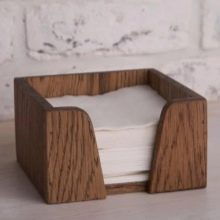
Of course, it is very difficult to buy a napkin holder in a store, painted, for example, in Palekh or in the Severodvinsk style, but handicrafts can be purchased at fairs from masters or ordered. Decoupage is one of the most common ways to decorate wood products. In creative stores, you can always find sets of oak, birch, alder and linden.
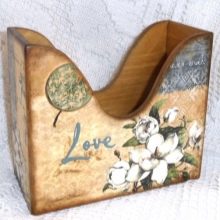
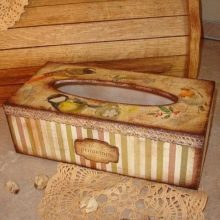
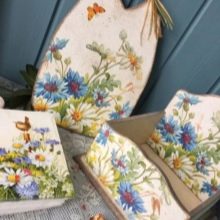
Other
In addition to the above, there are many products made from other materials. Crystal or porcelain products are very beautiful. They will become an original accent on any table. It is not difficult to create a wicker napkin holder from newspaper tubes with your own hands - an exciting activity, and the result will delight others. The technology of making napkin holders from epoxy resin is more complicated, but the resulting models are striking in splendor.
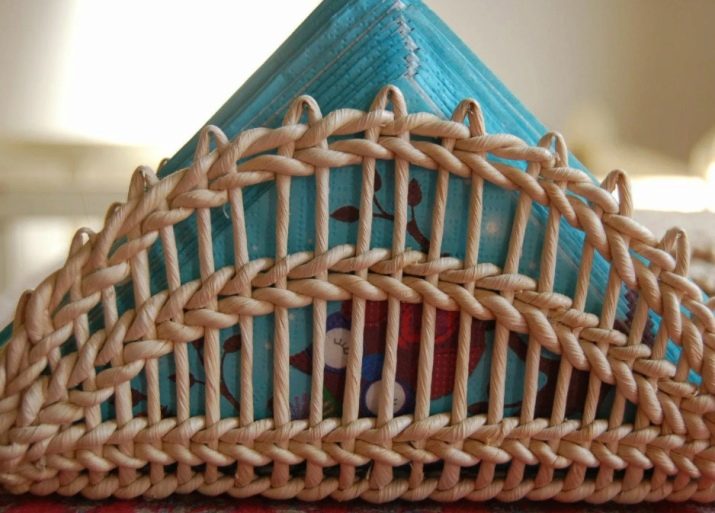
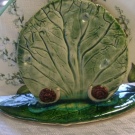
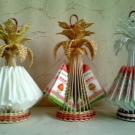
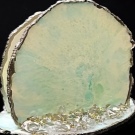
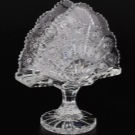
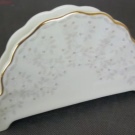
Design options
The design of napkin holders can be very diverse. Porcelain figurines of a dancer, figurines in the form of a girl in a long dress, and Gzhel products are very popular. Napkin holders in the form of a leaf or a butterfly, figurines of a peacock, a swan and even a cow look original. Stylish beautiful wrought iron stands that perfectly fit into the interior of the loft attract attention. Models in metal - with a solid square cloth or thin elegant horizontal rods - add a festive feel to the dining table.
Metal napkin holder can be white or black, gilded or silver, openwork or cast.
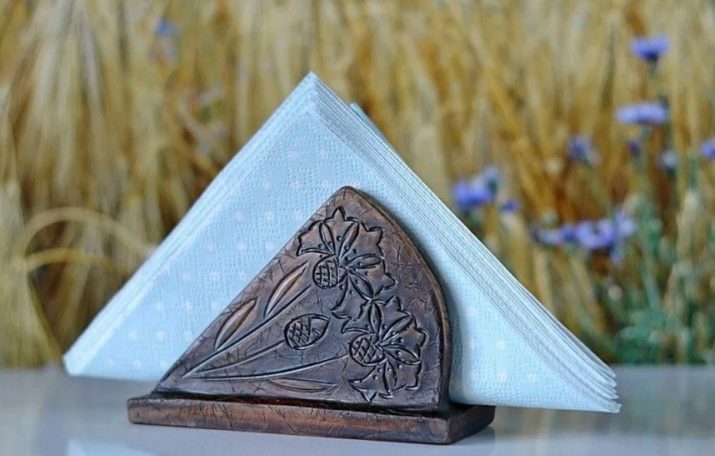
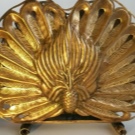


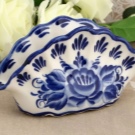
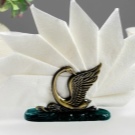
Secrets of choice
When choosing, you need to remember about the surrounding interior, cutlery and other accessories, right down to the tablecloth - all the details must be in harmony with each other.
If the kitchen is decorated in a loft style, forged products will come in handy; stainless steel napkin holders are ideal for Art Nouveau. Wooden pieces will perfectly fit into country, rustic and eco styles.
When choosing a napkin holder as a gift, you should pay attention to exclusive options, perhaps bronze, silver, crystal.
The right approach to product selection, creative thinking will help you navigate the endless assortment on the market and get the perfect napkin holder.
